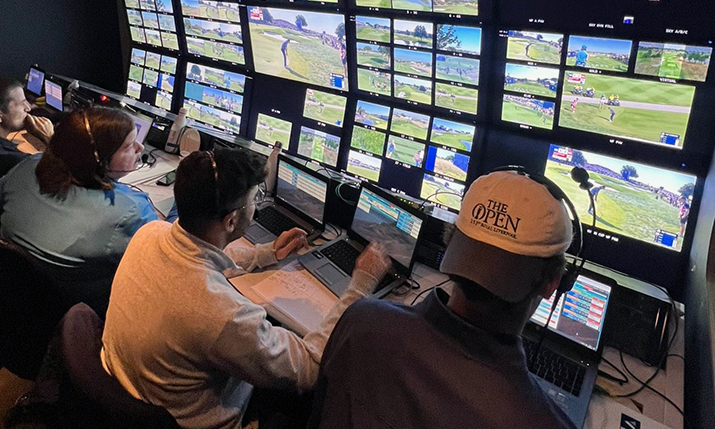Complex action: Verso Live explores how video game technology is bringing innovation to sports broadcasting
 By Dion Whitall, Verso Live applications director.
By Dion Whitall, Verso Live applications director.
The world of sports broadcasting is currently witnessing a significant tech-led transformation, influenced by the rapid advancements in video game technology and cloud computing. This evolution is not just about enhancing visual appeal but also about overcoming real time challenges when broadcasting a wide range of sports, from basketball to golf.
Among the varied digital innovations shaping sports broadcasting is the widely used Unreal Engine, a powerful tool originally built for video game development. Described by its developers as the, “most open and advanced real time 3D creation tool for photoreal visuals and immersive experiences”, its integration into sports broadcasting has been a game changer, offering unparalleled realism and interactivity in real time graphics.
Among its wide-ranging capabilities, Unreal Engine excels in creating detailed, high quality 3D environments that can be manipulated live, allowing for immersive visual storytelling that closely mimics the dynamics of the sport being covered.
Complex action
This capability is particularly beneficial in illustrating complex action, player movements and providing a virtual yet realistic view of sports arenas. Additionally, Unreal Engine’s ability to handle data-intensive tasks in real time means that graphics can be updated instantaneously based on live game data, such as player statistics and game scores.
This not only enhances the viewing experience but also provides broadcasters with the flexibility to adapt to the fast-paced nature of live sports. As a result, the adaptability and high fidelity of Unreal Engine’s graphics are setting new standards in how sports are visually represented and experienced by audiences worldwide.
This is in marked contrast to just a decade ago, when sports broadcasters faced substantial delays in real time graphics, often up to 40 seconds. Today, the integration of video game technology, particularly engines like Unreal Engine and cloud-based solutions, has drastically reduced these delays to near real time.
However, this rapid delivery of graphics creates a unique challenge: broadcasters now often need to introduce intentional, albeit shorter, delays to ensure that live scores aren’t revealed too quickly, preserving the suspense and excitement for viewers.
The viewer experience
In this rapidly evolving landscape, broadcasters are tackling a range of challenges head-on. A good example is the need to synchronise on-site clocks with broadcast graphics, an issue that becomes more pronounced when broadcasters’ access to arenas is limited, typically to the day of the event. This is something our team experienced at the recent Turkish Airlines EuroLeague basketball competition.
The solution lies in the development of advanced remote synchronisation technologies, which are proving crucial in ensuring that the timing displayed on-screen is perfectly aligned with the live events, thereby maintaining the integrity and continuity of the viewer’s experience. This is a huge improvement on the quality of the viewer’s broadcast from the previous solution, which was simply to add a cropped live video of the stadium’s clock overlaid.
Broadcasters are also adapting to changing audience preferences. For example, there’s a growing trend of viewers showing more interest in individual players over teams, accompanied by shorter attention spans. To address this, broadcasters are experimenting with new graphic elements to engage audiences more effectively. This includes the use of interactive heat maps, real-time player statistics and milestone systems. These elements not only highlight individual player achievements but also add a human touch to the broadcast, making it more relatable and engaging for the viewer.
So, how does this work in real-world event scenarios? The recent Ryder Cup showcased how to create dynamic on-screen graphics. This innovation underlined how video game technology can be adapted into traditional broadcast workflows, offering real-time 3D environments that enhance viewer engagement. The continuous leaderboard, an innovative feature in the team matchplay format, kept viewers informed with ongoing match statuses and additional information.
The integration of video game technology in sports broadcasting represents a pivotal shift in how viewers experience their favourite sports. As technology continues to evolve, it will be fascinating to see how broadcasters further innovate to enhance the viewer experience.

